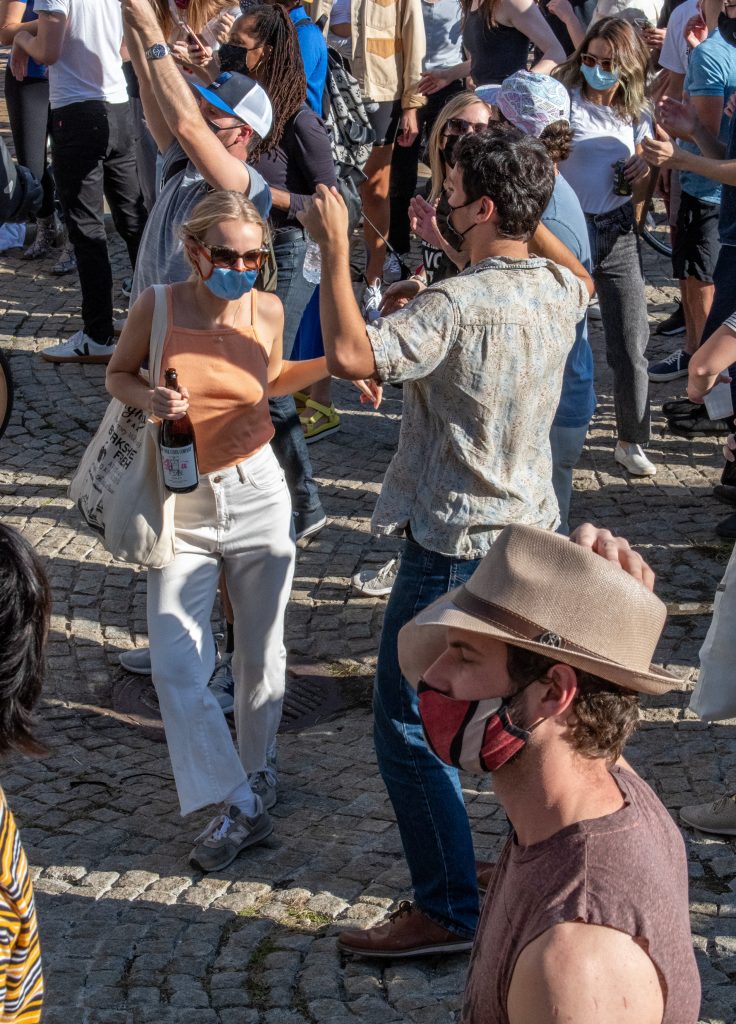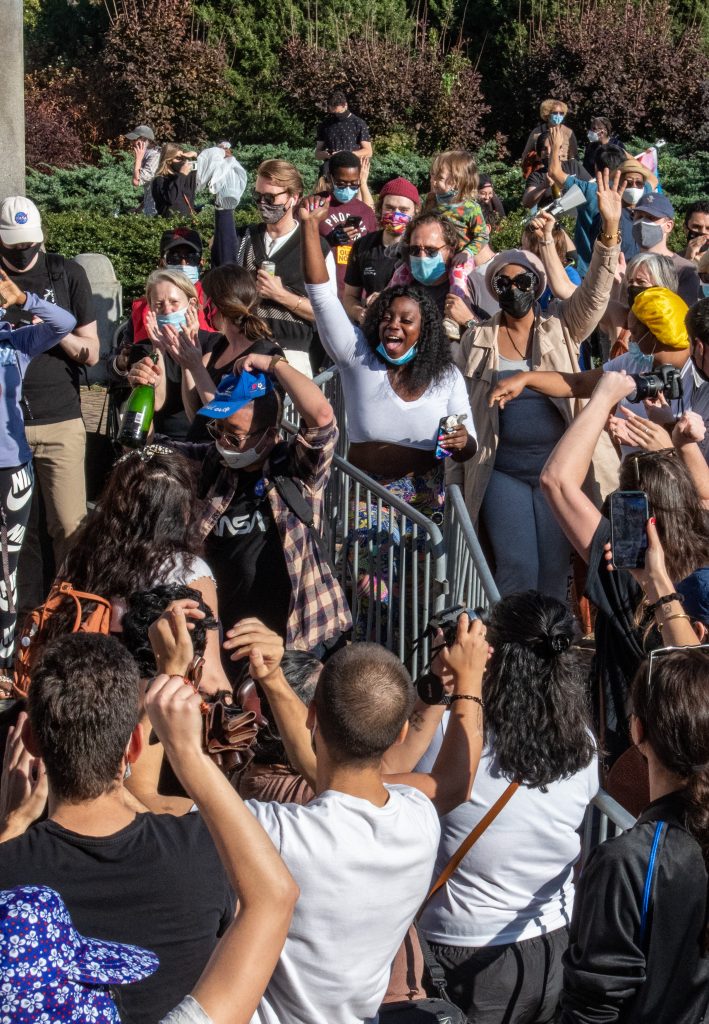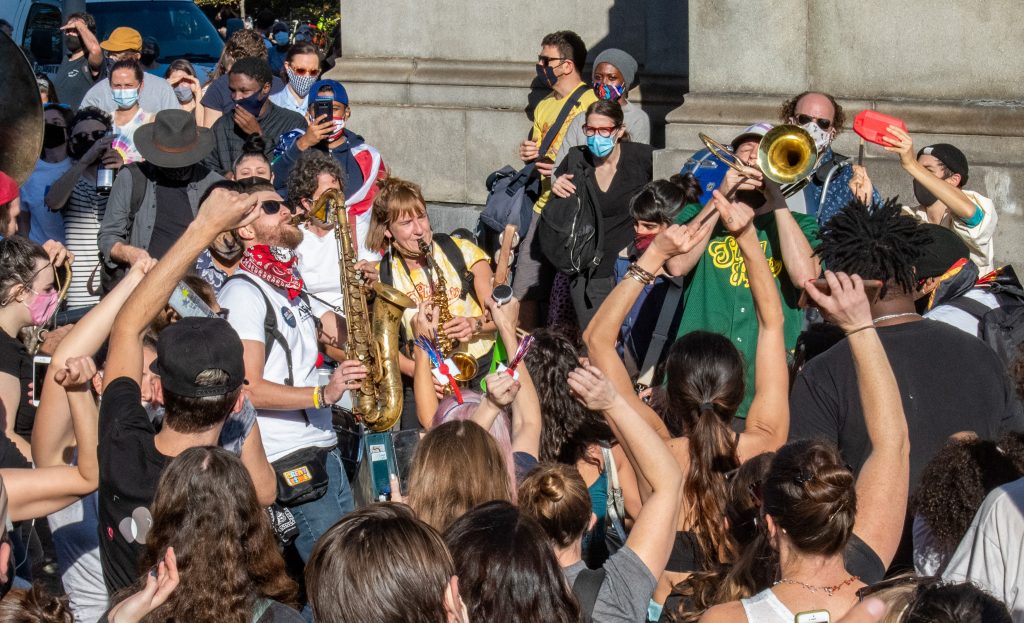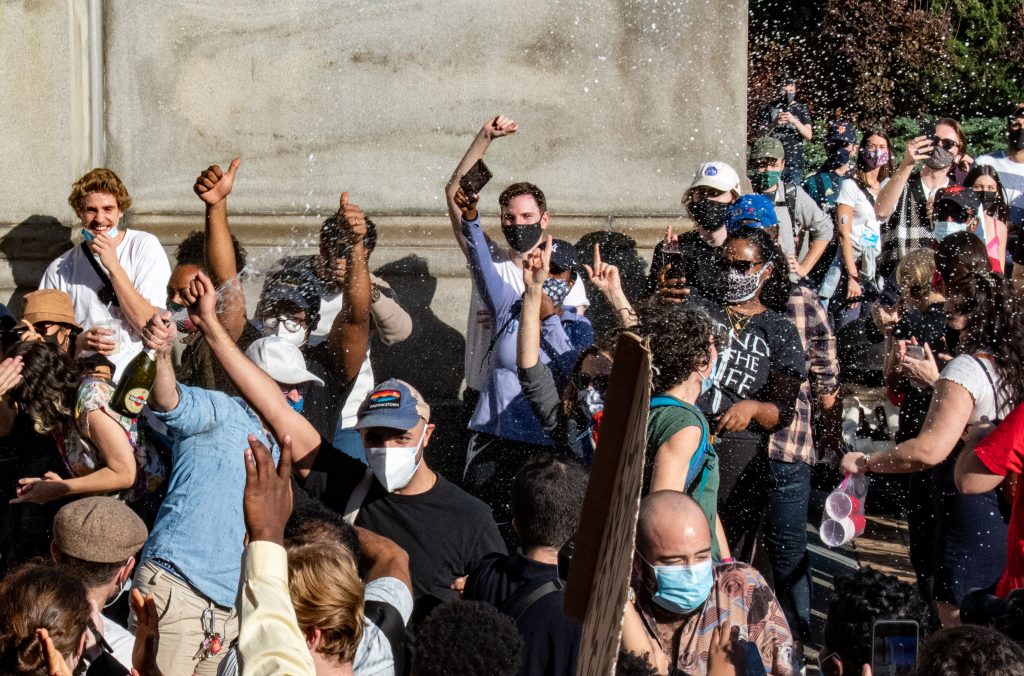My mind has rebelled against the cascade of bad things the Trump regime has done lately by insisting that I pay attention for a little while to just one of them.
The week before last, the United States effected the spectacular rendition, fascist in manner and deed, of several hundred Venezuelan refugees to a forced-labor prison in El Salvador. U.S. immigration officials began laying the groundwork for the rendition well before Trump came to power for the second time.
As early as June 2024, American immigration officials began detaining Venezuelan refugees for their tattoos—a form of personal expression that, ironically, has been bound up with American national identity since the early republic, when sailors marked their bodies permanently as American in an effort to keep from being impressed into the British navy, which, long after America’s independence, was slow to distinguish American citizens from British subjects (see Nathan Perl-Rosenthal, Citizen Sailors: Becoming American in the Age of Revolution).
In June 2024, for example, an aspiring Venezuelan streetwear entrepreneur named Frizgeralth de Jesús Cornejo Pulgar, who had been targeted by paramilitary groups associated with Venezuela’s Maduro regime, met U.S. border patrol agents for an asylum interview that he had requested through the agency’s official app and was detained by them because of his tattoos. Not even a declaration from his tattoo artist, confirming that the designs were innocuous, could get him released. In November, Daniel Alberto Lozano Camargo, a Venezuelan asylum seeker working at a carwash in Houston, was detained because of his tattoos, which included the names of his father, his niece, and his partner’s daughter. In December, Jerce Reyes Barrios, a professional soccer player who had been arrested and tortured by the Maduro regime in Venezuela after taking part in peaceful political demonstrations, also made an appointment through U.S. immigration’s official app to apply for asylum, only for U.S. officials to argue that his tattoos—a soccer ball and a rosary—marked him as a member of the Venezuelan gang Tren de Aragua. He, too, was detained.
E.M., a young Venezuelan food vendor and delivery person who has so far only been identified in the press by his initials, fled to Colombia with his girlfriend in 2021, after paramilitaries in Venezuela targeted the two of them for their political activity. In 2023, E.M. and his girlfriend applied from Colombia for asylum in the United States. U.S. immigration agents in that country asked E.M. about his tattoos but, seemingly unconcerned, granted the couple official refugee status in late 2024. When the couple arrived in Houston on 8 January 2025, however, immigration officials designated E.M. a member of the same gang, also on the basis of his tattoos—a crown, a soccer ball, and a palm tree. He, too, was detained. All of these refugees denied gang affiliation, as did their families; none had criminal records.
The day of his inauguration, Trump issued an executive order declaring Tren de Aragua to be a terrorist organization. It seems likely to me, given the timing of the early detentions and of Trump’s first-day proclamation, that a plan was in place, and that officials inside Immigration and Customs Enforcement had been cooperating with it quietly even before Trump took office. After the inauguration, the collection of refugees accelerated. A Venezuelan barber named Franco José Caraballo Tiapa was detained because of his tattoos on 3 February 2025. When Frengel Reyes Mota, a house painter who fled Venezuela in 2023, checked in with U.S. immigration officials on 4 February 2025, he, too, was detained as a suspected gang member, even though he has no tattoos at all, as well as no criminal record, and even though, in the documents filed against him, “the government . . . uses someone else’s last name in several parts . . . , identifies him with female pronouns, and uses two different unique identification numbers that immigration authorities use to keep track of individuals.” A Venezuelan named Neri Alvarado Borges was also detained in early February; one of his tattoos was an autism awareness ribbon with his brother’s name. On February 8, an aspiring musician named Arturo Suárez Trejo was arrested by immigration officials at his home in Raleigh, North Carolina; his tattoos include a hummingbird, which his wife says symbolizes “harmony and good energy,” and a palm tree, a reference to a Venezuelan expression about God’s greatness that his mother likes to quote. The tattoos that got Andry Hernandez, a gay makeup artist, detained “are flowers and are dedicated to his parents,” one of his lawyers has told NBC News; Hernandez, too, was detained when he showed up for his appointment to request asylum.
In early March, these detained Venezuelan asylum seekers and others were moved to South Texas or Louisiana from detention centers elsewhere, vanishing from courtrooms around the country where their cases were still being heard. The government seems to have made tracking the location of the detained refugees difficult even for their lawyers, but Josh Kovensky, reporting for Talking Points Memo, has uncovered records of detainees being moved on March 5, between March 7 and March 9, and on either March 10 or 11.
On the night of Friday, March 14, the detainees were “told they would be deported the next day to an unknown destination,” and lawyers for the American Civil Liberties Union and Democracy Forward, representing five of these detainees, somehow “caught wind of these movements,” according to a narrative of the facts compiled by Judge James E. Boasberg. In the early hours of Saturday, March 15, the lawyers filed for a temporary restraining order, asking Boasberg’s court to prevent the U.S. government from sending the detainees out of the country before their cases could be heard. The lawyers suspected—correctly, it turns out—that the Trump regime was planning to deport the Venezuelans under the Alien Enemies Act of 1798, the only law to survive from the repressive Alien and Sedition Acts that schoolchildren are taught to deplore, a law that hadn’t been used in seventy-five years. Immigration officials were boarding detainees onto airplanes as early as 7am that Saturday morning. At 9:40am, Judge Boasberg gave a verbal order forbidding the government to send the five plaintiffs named in the case out of the United States. Immigration officials delayed the deportation of those five, but continued to deport the other Venezuelans in custody. At 4pm, the Trump regime revealed that Trump had indeed signed a proclamation targeting Tren de Aragua under the Alien Enemies Act, and at 5pm, Boasberg began hearing the civil rights lawyers’ request for a restraining order. The Trump regime’s representatives in court repeatedly refused to answer when Boasberg asked if detainees were at that very moment being deported, but in fact, the first plane left Harlingen, Texas, at 5:26pm. At 6:47pm, Boasberg enjoined the government from removing from the country anyone detained under the Alien Enemies Act—not just the five named in the lawsuit—and told the government that “any plane containing [members of the class] that is going to take off or is in the air needs to be returned to the United States. . . . This is something that you need to make sure is complied with immediately.” When he spoke those words, two planes were still in the air, and a third had yet to depart Texas. Boasberg’s order was entered into the court’s docket at 7:26pm Saturday evening.
The order was not complied with. The first of the U.S. government’s three planes landed in El Salvador at 12:10am Sunday morning—hours after both the oral and the written versions of Boasberg’s order. Boasberg wrote that “the most reasonable inference is that [the Government] hustled people onto those planes in the hopes of evading an injunction or perhaps preventing them from requesting the habeas hearing to which the Government now acknowledges they are entitled.” He was being almost polite. The Trump regime’s defiance of his court’s authority was flagrant.
The government’s planes landed at a “mega-prison” in El Salvador called the Centro de Confinamiento del Terrorismo (CECOT). Soon after they arrived, the president of that country, Nayib Bukele, who has ruled as a dictator since 2022, tweeted, “Oopsie… Too late,” a message that U.S. Secretary of State Marco Rubio retweeted. El Salvador, an authoritarian country, currently has “the highest incarceration rate in the world.” Its vice president has told the New York Times, “To these people who say democracy is being dismantled, my answer is yes—we are not dismantling it, we are eliminating it, we are replacing it with something new.” Bukele himself has boasted, “Let all the ‘human rights’ NGOs know that we are going to wipe out these damned murderers and their collaborators, we will put them in prison, and they will never get out. We don’t care about your pathetic reports, your paid journalists, your puppet politicians, or your famous ‘international community,’ which has never cared about our people.” The human rights NGOs that Bukele scorns have concluded that “torture has become a state policy” in El Salvador, and report that in its prisons, dead bodies have been left in cells until they stink, hungry prisoners have been made to lick food off the floor, and overcrowded cells are sometimes flooded and then an electric current passed through the water. Incarceration at CECOT, which is a forced-labor camp, seems to be permanent. “The Salvadoran government has described people held in CECOT as ‘terrorists,’ ” the director of the Americas division of Human Rights Watch notes, “and has said that they ‘will never leave.’ Human Rights Watch is not aware of any detainees who have been released from that prison.”
That the United States government had anything to do with Bukele’s regime at all is in itself a five-alarm fire. And sending refugees to a country with a human rights record like El Salvador’s is not only morally reprehensible—it is against U.S. law. As Boasberg notes in his decision, the Foreign Affairs Reform and Restructuring Act stipulates that the United States may not “expel . . . any person to a country in which there are substantial grounds for believing the person would be in danger of being subjected to torture.”
What brought the evil done by the Trump regime home to me, though, is the account that Philip Holsinger, a photographer for Time magazine, gave of the refugees’ arrival at CECOT:
The intake began with slaps. One young man sobbed when a guard pushed him to the floor. He said, “I’m not a gang member. I’m gay. I’m a barber.” I believed him. But maybe it’s only because he didn’t look like what I had expected—he wasn’t a tattooed monster.
On Bluesky, I saw speculation that this gay barber was Andry Hernandez, but there’s no way of knowing for sure. Hernandez is a makeup artist, and the two barbers among the deportees that I’m aware of seem to be straight. It hardly matters. The anguish of the prisoner, whoever he is, rings clear as a bell. And Holsinger’s photographs fill out the picture alarmingly. After arriving in the intake yard, in the middle of the night, the prisoners, shackled at their wrists and ankles, were slapped, kicked, and shoved. As the prisoners’ heads were shaved,
The guy who claimed to be a barber began to whimper, folding his hands in prayer as his hair fell. He was slapped. The man asked for his mother, then buried his face in his chained hands and cried as he was slapped again.
To recapitulate: Two weeks ago, my country, the one I was born in and that I’m a citizen of, sent hundreds of men, many with no criminal record, to a forced-labor camp in a totalitarian country that almost none of these men had probably ever been to. Upon their arrival, they were assaulted, their clothes were confiscated, and their heads were shaved. Those running the camp promise they will never leave. How is this not complicity in sending people to the modern equivalent of Auschwitz? How is this not the moral nightmare that every decent person alive today with any knowledge of history has been dreading his whole life? Whole news cycles of malfeasance by the Trump regime have coursed over us since these men were deported. But Andry Hernandez is still locked in CECOT, where, the Financial Times has written, if it ever reaches full capacity, each prisoner would have “less than half the minimum [space] required under EU law to transport midsized cattle by road.”
As if to prove the Trump regime’s immorality, Kristi Noem, the Secretary of Homeland Security, flew to El Salvador the other day to tour CECOT, and had herself filmed in front of a cell where the bunks are four tiers high. That’s how high the bunks were at Buchenwald, as it happens. To anyone who has ever read books about or watched documentaries about the Holocaust, Noem’s video selfie, which she posted to her Instagram account, makes an unseemly rhyme.









